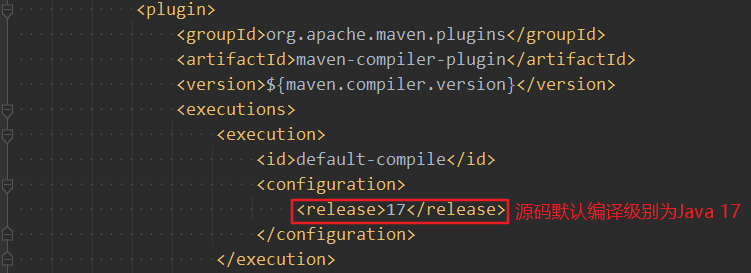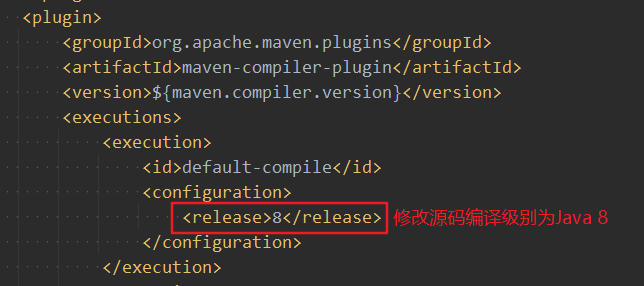Sentinel是什么
Sentinel是分布式系统的流量防卫兵,以流量为切入点,从流量控制、流量路由、熔断降级、系统自适应过载保护、热点流量防护等多个维度保护服务的稳定性。详见:Sentinel Github文档,Sentinel 介绍,Spring Cloud Alibaba Sentinel 。
整体说来,Sentinel分为两个部分:客户端和服务端,在使用过程中客户端和服务端的版本要保持一致。
针对不同形式的应用和通信方式集成Sentinel客户端的方式略有所不同,参考:快速开始,Spring Cloud Alibaba Sentinel,开源框架适配,多语言支持。
服务端提供了一个管理控制台,可以在控制台界面中看到相应的监控信息,以及执行相关的服务治理操作。
Sentinel控制台
源码启动
首先,下载Sentinel最新稳定分支的源代码,加载到IDE(如:IntelliJ IDEA)中,找到控制台的启动类:com.alibaba.csp.sentinel.dashboard.DashboardApplication,添加启动JVM参数:
1 | -Dserver.port=8080 |
运行com.alibaba.csp.sentinel.dashboard.DashboardApplication即可,运行端口为8080。
-Dserver.port=8080是Spring Boot的参数,用于指定Sentinel控制台启动端口为8080,其他的是Sentinel客户端参数-Dcsp.sentinel.dashboard.server=localhost:8080用于向Sentinel接入端指定控制台的地址-Dproject.name=sentinel-dashboard用于向Sentinel指定应用名称
经过上述配置,控制台启动后会自动向自己发送心跳。
从Sentinel 1.6.0开始,Sentinel控制台支持简单的登录功能,默认用户名和密码都是sentinel。
-Dsentinel.dashboard.auth.username=sentinel用于指定控制台的登录用户名为sentinel-Dsentinel.dashboard.auth.password=123456用于指定控制台的登录密码为123456,如果省略这两个参数,默认用户和密码均为sentinel-Dserver.servlet.session.timeout=7200用于指定服务端会话的过期时间,如7200表示7200秒;60m表示60分钟,默认为30分钟
全部的配置项可以参考启动配置项文档。
值得注意的是,以最新稳定分支“1.8”为例,源码的编译级别默认为Java 17,如下所示:
如果未安装JDK 17环境,在运行控制台启动类时可能会报错:java: 警告: 源发行版 17 需要目标发行版 17。
解决办法:修改Sentinel/pom.xml文件中maven-compiler-plugin插件的<release>参数为指定的JDK版本(如:8)即可。
单机模式
可以从release 页面下载最新版本的控制台jar包。
使用如下命令启动控制台:
1 | java -Dserver.port=8080 -Dcsp.sentinel.dashboard.server=localhost:8080 -Dproject.name=sentinel-dashboard -jar sentinel-dashboard-{version}.jar |
其中-Dserver.port=8080用于指定Sentinel控制台端口为8080。
从Sentinel 1.6.0起,Sentinel控制台引入基本的登录功能,默认用户名和密码都是sentinel。可以参考鉴权模块文档配置用户名和密码。
启动Sentinel控制台后,在浏览器中输入控制台访问地址:http://localhost:8080,输入用户名和密码即可进入Sentinel控制台界面。
集群模式
Sentinel开源版本模式只支持单机模式部署,集群环境的部署需要进行改造,主要涉及的点有如下几个方面:
- 规则管理及推送:集成配置中心,如:ZooKeeper,Nacos
- 监控:集成数据库,支持历史查询
- 权限控制:细粒度的权限控制
集成Nacos实现规则管理和推送
- 规则管理
关于规则管理部分,需要在Sentinel控制台进行改造的内容分为两个部分:前端页面和保存配置的后端接口,由于Nacos配置中心中有3个概念:命名空间,DataId和Group,因此需要同步体现在UI界面中,在添加或修改配置的时候可以修改其对应值;在保存的时候将参数信息提交给后端接口。后端接口在接收到管理后台前端的提交的参数后,将其同步保存到Nacos配置中心即可。针对后端接口的改造涉及两个方面,其一:增加对应Nacos配置中心的3个参数(命名空间,DataId和Group),其二:集成Nacos客户端,将数据保存到Nacos配置中心后端数据库中。
如下代码示例展示了如何使用Nacos客户端接口将数据保存到Nacos服务端:
1 | String dataId = ""; // Nacos配置项DataId |
- 规则推送
规则推送是针对应用而言的,当Sentinel控制台集成Nacos配置中心后,当新建或修改规则配置信息后,Sentinel控制台将数据推送给Nacos配置中心。在利用Nacos的推送机制使得应用端能及时接收到新建或修改后的配置信息。
关于集成Nacos配置中心实现规则推送的实现比较简单,只需要在应用中集成sentinel-datasource-nacos组件即可,如下示例:
1 | <!-- 集成Nacos配置中心,从Nacos配置中心获取规则配置数据 --> |
在应用端订阅相应的规则配置项即可:
1 | // 从Nacos配置中心订阅限流规则配置项 |
监控数据持久化
在开源版Sentinel控制台中,默认是将数据保存到到内存的(InMemoryMetricsRepository),并且只保存最近5分钟的数据,这对于历史数据的查询非常不友好。如果要实现监控数据的持久化存储,只需要实现接口MetricsRepository即可,同时将Bean注入到Spring容器中。另外,还需要在MetricFetcher和MetricController中注入这个持久化Bean。
权限控制
在开源版Sentinel控制台中,对权限的控制非常粗糙,相当于只有一个具备最高权限的管理员用户;在做权限校验时也非常简单,只检查超级管理员是否已经登录,如果未登录则跳转到登录页面;如果已经登录则可以执行所有操作。
登录入口在AuthController中,做登录检查在DefaultAuthorizationInterceptor拦截器中实现。另外,对于需要登录后才能执行的操作均使用注解AuthAction进行标注。
改造参考:
在生产环境中使用 Sentinel
Sentinel 控制台(集群流控管理)
动态规则扩展
日志
商业版Sentinel:
MSE Sentinel 控制台
AHAS Sentinel 控制台
客户端接入Sentinel控制台
Sentinel可以简单的分为Sentinel核心库和控制台,核心库不依赖控制台,但是结合控制台可以取得最好的效果。所谓客户端接入控制台就是建立Sentinel核心库与Sentinel控制台之间的联系。
那么,这里有一个疑问:是否可以只使用Sentinel的核心库而不用接入控制台呢?答案是肯定的,当然可以只使用Sentinel核心库也能使用其相应的服务治理功能。但是,缺少服务治理规则可视化展示和编辑功能是不完善的,且易用性将会大打折扣。
不同类型的客户端应用接入Sentinel控制台的方式以及配置参数有所区别,客户端接入的详细步骤参考Wiki 文档。
Sentinel服务治理规则的配置可以分为两种方式:API,集成配置中心(如下Nacos),如下将以限流控制为例分别说明API方式和集成Nacos配置中心方式进行治理规则的配置与应用。
API方式配置治理规则
API方式配置服务治理规则是一种硬编码方式,如果需要添加新的规则就必须重新编码,这种方式不适合在生产环境使用,仅能作为测试验证。
1 | // 如下硬编码限流规则需要在应用启动成功之后确保被加载 |
在使用服务治理规则时有2种方式:注解,SphU.entry()方法。其中注解方式可能需要依赖特定的环境,比如:Spring AOP。在使用Spring Boot框架时通常需要添加如下依赖:
1 | <dependency> |
然后使用注解SentinelResource定义需要进行服务治理的资源信息:
1 | // 通过注解将方法定义为资源 |
通常来讲,使用注解方式定义资源信息会更加简洁;但是当无法使用注解方式时,可以直接使用Sentinel提供的SphU.entry()方法定义服务治理资源信息。
1 | Entry entry = null; |
值得注意的是:在直接使用SphU.entry()方法时,不同的限流规则可能存在一些语法上的区别,需要区别处理。
集成Nacos配置中心配置和推送治理规则
如果将服务治理规则数据放在配置中心,那么就不用通过API方式硬编码服务治理规则信息,这将大大带来灵活性。
1 | <!-- 集成Nacos配置中心,从Nacos配置中心获取规则配置数据 --> |
在应用中通过如下方式订阅配置中心的治理规则更新:
1 | // 如下示例展示了定义在配置中心的限流规则 |
在Nacos配置中心添加如下限流规则信息:
- DataId: com.alibaba.csp.sentinel.demo.flow.rule
- Group: Sentinel_Demo_FlowRule
- 配置内容:
1
2
3
4
5
6
7
8
9[
{
"resource": "FlowRule_qps",
"controlBehavior": 0,
"count": 3.0,
"grade": 1,
"strategy": 0
}
]
在Spring Cloud Alibaba项目中使用Sentinel
如下以在Spring Cloud应用中接入Sentinel控制台为例进行说明。
第一步:添加依赖
1 | <!-- 使用sentinel进行服务治理 --> |
第二步:添加配置参数
1 | # Sentinel客户端本地启动HTTP API Server的端口号,对应启动配置项参数:csp.sentinel.api.port |
第三步:从配置中心订阅治理规则信息
1 | // 限流规则 |
第四步:通过注解定义资源
1 |
|
在Spring Cloud Alibaba项目中集成Sentinel除了配置参数稍有区别之外,其他使用方式均是一致的。
此外,在Spring Cloud alibaba项目中使用Sentinel实现服务治理后,就无需使用OpenFeign的熔断配置了(fallback参数配置)。